Vertical Injection Molding Machine Diagram: A Comprehensive Guide
Vertical injection molding machines represent a specialized category of injection molding equipment with unique advantages for specific applications. Unlike their horizontal counterparts, these machines operate with a vertical clamping mechanism, making them ideal for insert molding, overmolding, and applications requiring precise part placement. This article explores the components, working principle, and applications of vertical injection molding machines through detailed examination of their schematic diagrams.
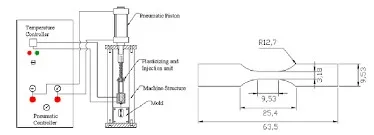 Diagram illustrating the key components of a vertical injection molding machine, including the injection unit, clamping unit, and mold area.
Diagram illustrating the key components of a vertical injection molding machine, including the injection unit, clamping unit, and mold area.
Key Components of Vertical Injection Molding Machines
Understanding the vertical injection molding machine diagram begins with identifying its fundamental components. These machines consist of two primary systems: the injection unit and the clamping unit, arranged vertically rather than horizontally.
Injection Unit
The injection unit is responsible for melting and injecting the plastic material into the mold. In vertical machines, this unit is typically positioned above the clamping unit.
Clamping Unit
The clamping unit holds the mold halves together with sufficient force to withstand the injection pressure. The vertical orientation allows gravity to assist in certain molding operations.
Control System
Modern vertical injection molding machines feature sophisticated computerized controls that manage temperature, pressure, injection speed, and cycle times for precision manufacturing.
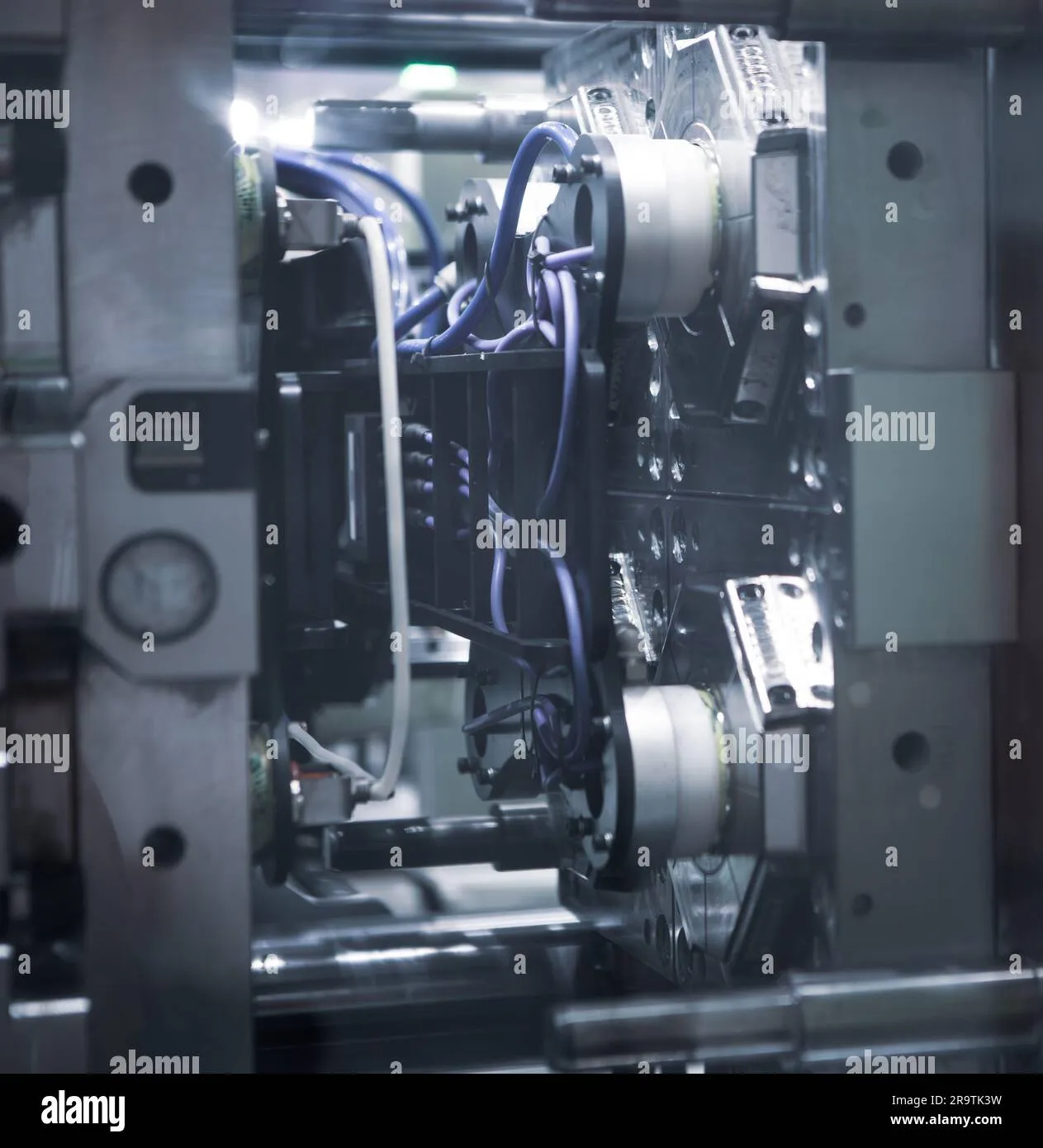 Detailed view of the injection unit components including screw, barrel, and hopper system in a vertical configuration.
Detailed view of the injection unit components including screw, barrel, and hopper system in a vertical configuration.
Detailed Breakdown of Vertical Machine Components
Examining the vertical injection molding machine diagram reveals several critical subsystems that work together to produce molded parts:
| Component | Function | Position in Vertical Machine |
|---|---|---|
| Hopper | Feeds raw material into the barrel | Top section |
| Barrel and Screw | Heats, melts, and conveys plastic | Vertical orientation |
| Heater Bands | Maintains optimal melting temperature | Along the barrel |
| Nozzle | Transfers molten plastic to mold | Lower end of injection unit |
| Platens | Hold mold halves in position | Vertical alignment |
| Toggle Mechanism | Provides clamping force | Behind moving platen |
| Ejection System | Removes finished parts from mold | Integrated into moving platen |
Working Principle of Vertical Injection Molding Machines
The operation of a vertical injection molding machine follows a specific sequence that can be clearly understood through the machine diagram:
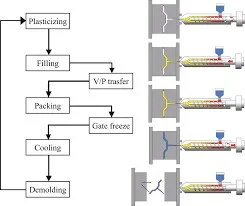 Step-by-step visualization of the vertical injection molding process from mold closing to part ejection.
Step-by-step visualization of the vertical injection molding process from mold closing to part ejection.
Step 1: Mold Closing
The cycle begins with the vertical movement of the mold halves coming together under high pressure, creating a sealed cavity.
Step 2: Injection Phase
Molten plastic is injected from the vertically oriented barrel through the nozzle into the mold cavity. The vertical design often allows for more precise control of material flow, especially for insert molding applications.
Step 3: Cooling and Solidification
After injection, the material cools and solidifies within the mold, taking the shape of the cavity. Cooling channels within the mold help regulate this process.
Step 4: Mold Opening and Ejection
The mold opens vertically, and finished parts are ejected, often falling naturally due to gravity or removed by robotics.
Advantages of Vertical Injection Molding Machines
The unique design of vertical injection molding machines offers several distinct benefits:
- Insert Molding Capability: Gravity helps secure inserts in place during the molding process
- Space Efficiency: Smaller footprint compared to horizontal machines
- Automation Friendly: Easier integration with robots for part removal and insert placement
- Material Savings: Reduced sprue and runner systems in many configurations
- Accessibility: Easier mold maintenance and accessibility from the operator side
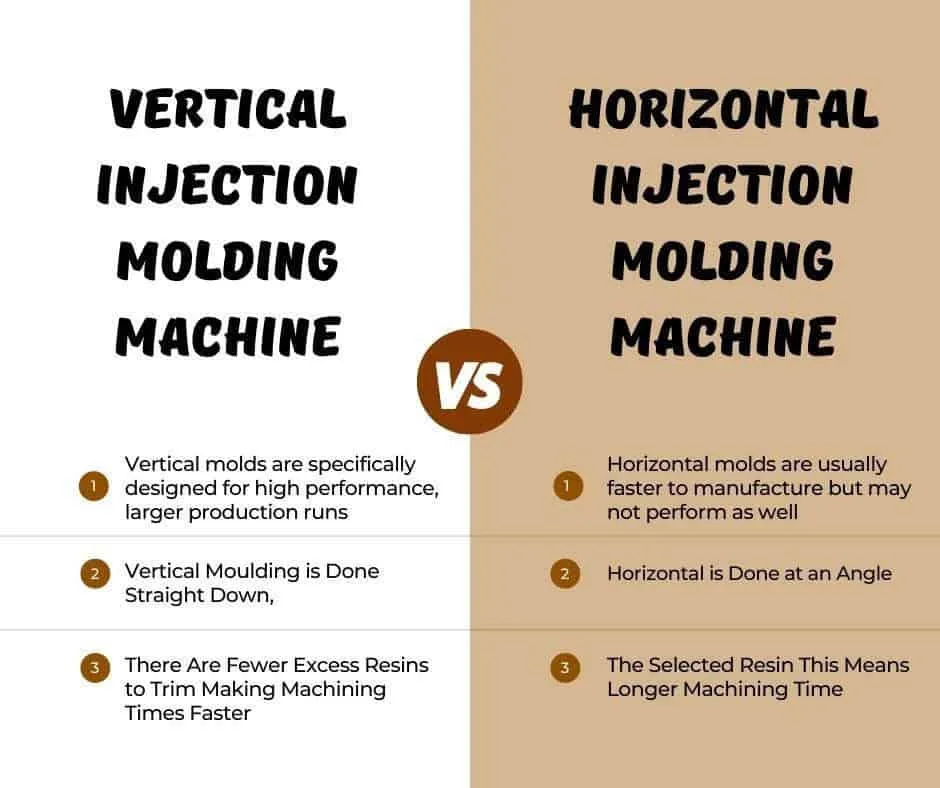 Visual comparison highlighting the differences in layout and operation between vertical and horizontal injection molding machines.
Visual comparison highlighting the differences in layout and operation between vertical and horizontal injection molding machines.
Applications of Vertical Injection Molding Machines
Vertical injection molding machines excel in specific applications that leverage their unique capabilities:
Insert Molding
The vertical orientation is ideal for molding plastic around metal inserts, electrical components, or other pre-formed parts, as gravity helps keep inserts properly positioned.
Overmolding
Vertical machines efficiently handle overmolding processes where a substrate part is encapsulated with another material.
Micro Molding
The precision offered by vertical machines makes them suitable for manufacturing extremely small components with tight tolerances.
Multi-Material Molding
Some vertical machines are equipped with multiple injection units for producing parts from different materials in a single cycle.
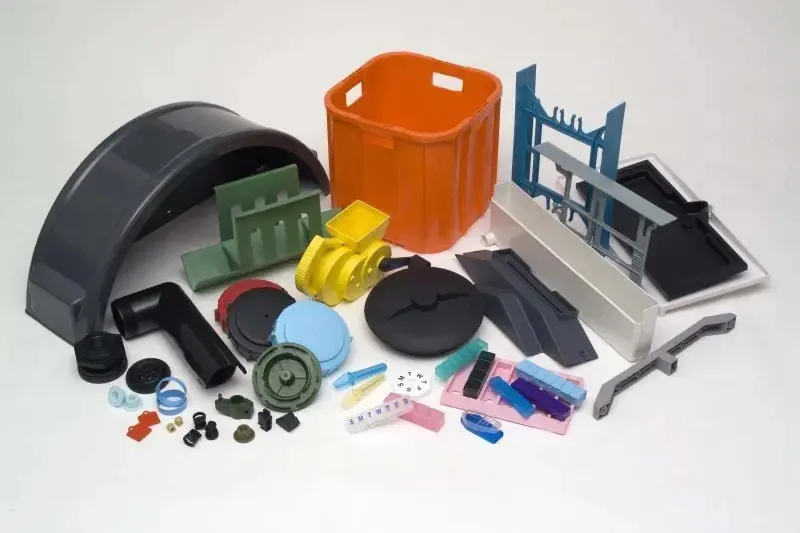 Various manufactured components showcasing the capabilities of vertical injection molding processes.
Various manufactured components showcasing the capabilities of vertical injection molding processes.
Technical Specifications and Selection Criteria
When evaluating vertical injection molding machines, several technical parameters should be considered:
| Parameter | Description | Importance |
|---|---|---|
| Clamping Force | Maximum force applied to keep mold closed | Determines part size and material selection |
| Injection Capacity | Maximum volume of material injected per cycle | Limits part size and wall thickness |
| Platen Size | Dimensions of the mold mounting area | Determines maximum mold size |
| Daylight | Maximum vertical distance between platens | Affects mold height capability |
| Shot Weight | Maximum weight of material per injection | Critical for material cost calculations |
Maintenance Considerations for Vertical Machines
Proper maintenance is crucial for optimal performance and longevity of vertical injection molding machines. Key maintenance areas include:
Regular Inspection
Routine checks of the toggle mechanism, hydraulic systems, and alignment ensure consistent performance and prevent unexpected downtime.
Lubrication Systems
Vertical machines require specific lubrication protocols for their unique mechanical components, particularly in the clamping system.
Preventive Maintenance
Scheduled maintenance of heaters, sensors, and hydraulic components helps maintain precision and repeatability in the molding process.
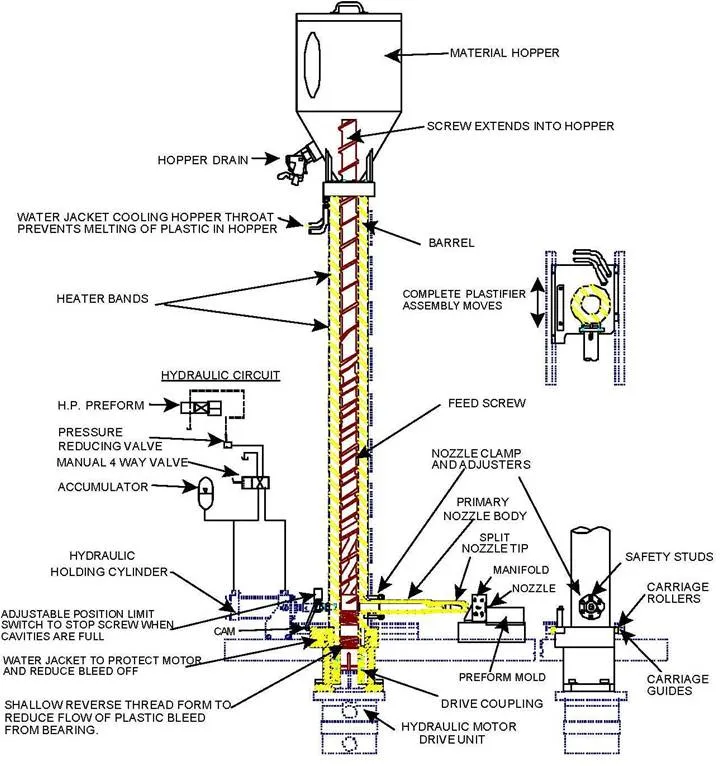 Schematic showing maintenance points and recommended service intervals for vertical injection molding machines.
Schematic showing maintenance points and recommended service intervals for vertical injection molding machines.
Future Trends in Vertical Injection Molding Technology
The vertical injection molding machine continues to evolve with advancements in technology:
Industry 4.0 Integration
Modern vertical machines are increasingly equipped with IoT sensors and connectivity for real-time monitoring and predictive maintenance.
Energy Efficiency
New designs focus on reducing energy consumption through servo-electric drives and optimized heating systems.
Hybrid Technologies
Combining vertical clamping with horizontal injection units creates machines that offer the benefits of both orientations.
Conclusion
Vertical injection molding machines represent a vital segment of the plastics manufacturing industry, offering unique capabilities for insert molding, overmolding, and other specialized applications. Understanding the vertical injection molding machine diagram provides insight into how these machines operate differently from their horizontal counterparts and why they are the preferred choice for certain manufacturing processes. As technology advances, vertical injection molding machines continue to become more precise, efficient, and integrated with smart manufacturing systems, ensuring their continued relevance in modern production environments.

